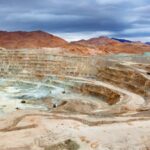Aquaculture is a booming business all over the world, but it is heavily dependent on ambient aquatic conditions.
Sustainable aquaculture requires innovative solutions in order to meet the challenges of nature.
So what’s the secret to being successful in this industry?
Here’s the reveal: Advanced technology and scientific expertise can contribute to sustainable and cost-effective marine aquaculture production anywhere in the world!
Marine aquaculture and the environment
The term ‘marine aquaculture’ has a broad definition. It covers the production or farming of a large variety of marine organisms including many species of fish, seaweed and invertebrates.
Growth in any marine sector will result in increased exploitation of marine space and increased pressure on the marine environment.
This is also the case with aquaculture.
Why finding the right spot is critical for successful aquaculture
Each organism has its own requirements to the environment, but they have one thing in common: They are all heavily dependent on ambient aquatic conditions.
Therefore, site selection – meaning locating the best site – is crucial. The three most important issues you need to consider in site selection are these:
- Fish welfare
- Environmental impact
- Physical conditions
In order to select the best sites, we need information about the physical, chemical and environmental conditions in the entire marine area. We get this information from 3D marine models.
For example, the currents at a fish farm must be suited to the farmed species, and the oxygen concentration in the water needs to be high.
Well-chosen marine farm sites, such as those that DHI has selected in Europe, Asia and Australia, have optimal currents conditions and plenty of oxygen-rich water. Combined with good temperature and salinity levels, the farm sites ensure efficient production, with low environmental impact and healthy fish.
But it’s not only the fish that benefits from favourable conditions. The currents dilute released nutrients and prevent accumulation of organic material at the seabed. This contributes to oxygen-rich bottom water, supporting a high level of biodiversity at the seabed.
Careful knowledge-based site selection, build on state-of-the-art model technology is not a costly detour. It’s a shortcut to ensuring not only sustainable – but also cost-effective – aquaculture production all over the world.








